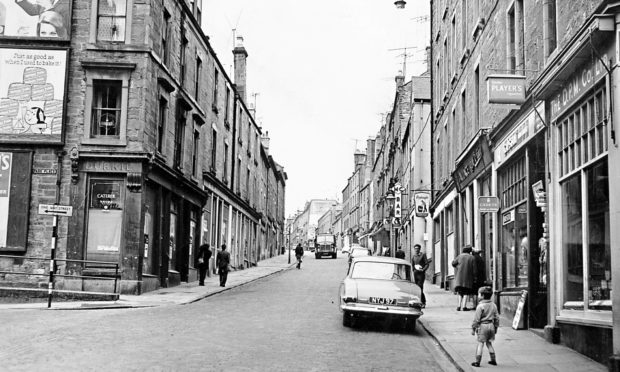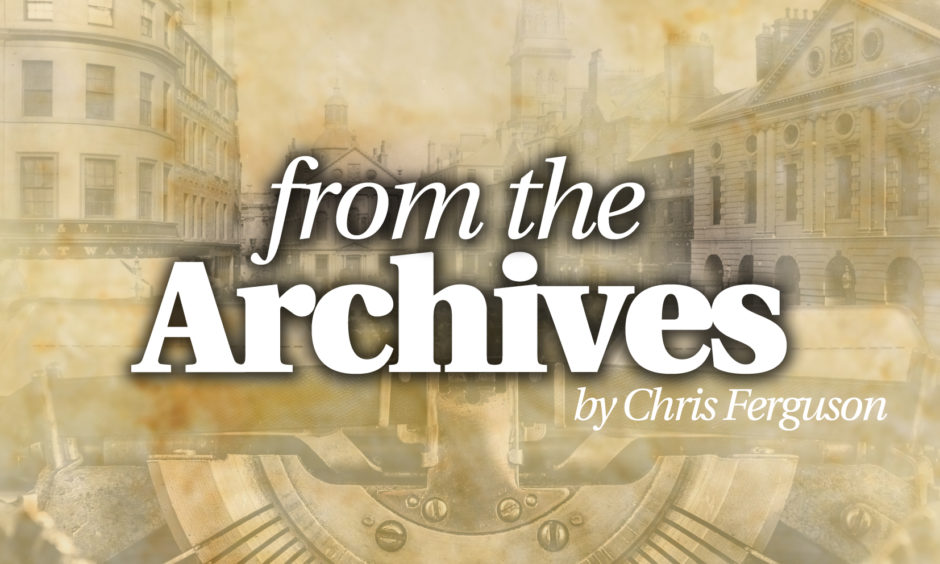In December 1816, social order was violently overturned in Dundee.
Workers’ fury exploded as sharp food price rises heaped added misery to high unemployment and low wages.
The mob targeted oatmeal sellers accusing them of exploiting their suffering.
At the inquiry that followed there was much soul searching.
It was evident that the provident had discerned the signs of the times, according to the Dundee Advertiser.
And the thoughtless were at last roused from their secure indifference.
A lesson for the utilities of today and the politicians who extract green levies from bill payers who can’t afford to heat their homes?
I do not have a record of temperatures in Dundee that December but 1816 was called the year without a summer.
A volcanic explosion in Indonesia caused havoc with worldwide weather.
Summer temperatures plunged and although Scotland is not thought to have been hit as hard as England, the drop in agricultural output affected the whole country.
The UK debt crisis following the war with France added an inflammable dimension. Income tax was scrapped in favour of direct taxes on goods. The poor were being asked to bale out the Treasury and repay the wealthy who bankrolled the country during the war.
In Hawkhill, Dundee, an oatmeal seller called Thomson decided to hike his prices from 18 pence to 20 pence. This was the spark that fired the riot that was to become one of the most notable events in Europe in 1816.
It started at 8pm when boys and women burned an effigy of Thomson. The mob grew in numbers and marched on Scouringburn, attacking the homes of meal sellers.
Next they rampaged through Overgate, smashing the windows of meal sellers Mungo Shepherd, William Findlay and David Barney in Crichton Street.
As they left Murraygate to head up King Street, their number swelled again and that was the point destruction turned to robbery.
The mob returned to Murraygate and relieved shopkeeper William Murdoch of his money and goods.
After a stop in St Andrew’s Street, they targeted the Carolina Port home of a Mr Lindsay.
Young women fled in terror through back windows, clamouring over rocks to a house at Mayfield. The mob dismantled the house, taking everything including food.
Mr Lindsay’s servants raised Provost Riddoch, who urged them to hold out until morning.
Police Captain Blair pleaded with the mob but was ignored.
He tried again at 1am and his assurance that the “respectable inhabitants” of Dundee would come up with a plan to relieve their suffering and supply meal was accepted.
The riot was over but Provost Riddoch had questions to answer about his inaction and indifference. He did not even know how many police constables Dundee had.
The wealthy of the town turned their attention to the running of the burgh by the magistrates.
Riddoch was told by a Mr Roberts, “But the truth is, provost, that instead of keeping the peace, you were only anxious to keep your places.”
When the grass sales turned sour
Grass sales on the farms of Perthshire and Angus were social as well as commercial gatherings.
Cowfeeders, small dairy operators, would flood out of Perth and Dundee in the spring to buy up grass to cut for hay.
Buyers would be ferried in horse-drawn buses between farms such as Nether Balgay, Menzies Hill, Wester Gourdie, Balgarthno and East and West Mylnfield.
Refreshments were served at each stop and buyers would eventually return to their towns relaxed after a day in the fresh country air.
However, the grass sales just outside Dundee in May 1878 took an unpleasant twist.
The businessmen found themselves barracked and humiliated by snarling thugs who had descended on the farms.
There were up to 60 of them who displayed behaviour of the most outrageous description, according to The Courier.
“They belonged to that element of the community styled as rough,” the paper commented.
As vehicles travelled between farms, thugs followed by foot, defaming the businessmen and “hallooing, shouting and swearing” at them.
At one farm, the roughs took control of the refreshments but a fight soon broke out among the group. Two of the party stripped off and had a set-to in the farm yard.
On another farm a “respectable dairyman who was serving whisky to his friends” was surrounded and relieved of his bottle. A Lochee dealer who tried to get it back was punched in the face. The thugs were by now so high on drink and the thrill of violence that they look all control at the final farm.
They commandeered a quantity of whisky, a huge barrel of beer and drank themselves to oblivion.
They hurled the buyers with the foulest oaths and pelted them with any object at hands.
There were a couple of police officers in attendance but they were kicked and punched.
The Courier’s report suggests a picture of a circle of thugs surrounding their stolen drink and protecting it with vicious determination.
The report concluded: “Proceedings so disgraceful have never been witnessed at any of the sales in this district.”











